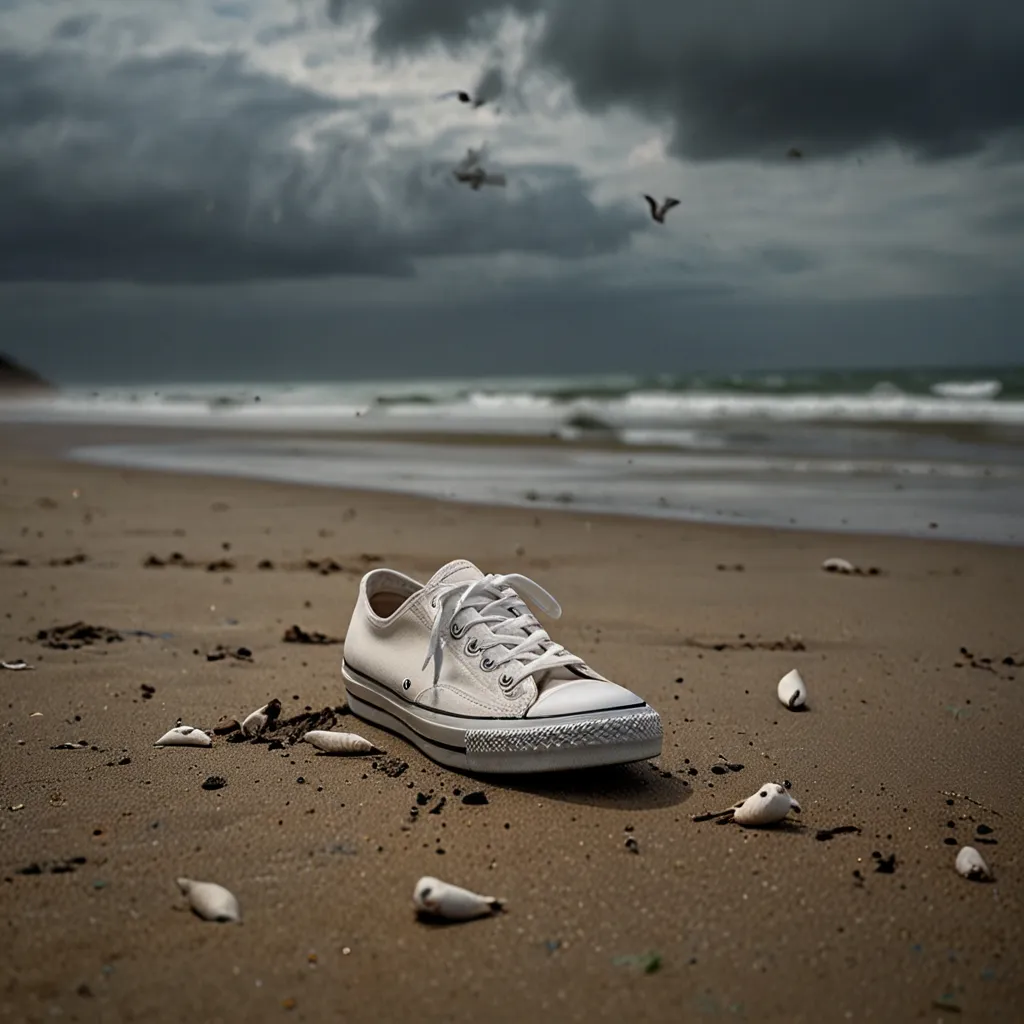The Mysterious Feet of the Salish Sea: A Tale of Science, Tragedy, and Human Curiosity
Imagine strolling along a tranquil beach, the waves gently lapping at your feet, when suddenly you spot something unusual in the sand. As you approach, your heart races – it’s a shoe, and inside, to your horror, is a human foot. This isn’t the opening scene of a crime novel; it’s a real-life mystery that has been unfolding in the Salish Sea region for over two decades.
The Salish Sea, a stunning body of water bordering British Columbia and Washington State, has become infamous for a peculiar phenomenon: the recurring discovery of detached human feet washing up on its shores. Since 2007, at least 24 such grisly finds have been reported, captivating the public’s imagination and sparking wild theories ranging from serial killers to alien interference.
It all began on a summer day in August 2007 when a 12-year-old girl made a chilling discovery on Jedediah Island. What she found wasn’t a seashell or a piece of driftwood, but a men’s size 12 Adidas shoe containing a human foot. Little did anyone know that this was just the first of many similar findings that would baffle authorities and the public alike for years to come.
As more feet turned up on various beaches and islands in the area, the mystery deepened. People couldn’t help but wonder: What was causing this strange phenomenon? Were these the work of a deranged killer? Could they be linked to some sinister criminal organization? Or was there a more mundane, yet equally tragic, explanation?
The truth, as it often is, turned out to be less sensational than the theories, but no less fascinating. Experts have now largely agreed on an explanation that involves a perfect storm of natural processes, modern technology, and the unique geography of the Salish Sea.
Let’s dive into the science behind this macabre mystery. When a body ends up in water, whether through accident, suicide, or other means, it undergoes a process of decomposition. This process can lead to the separation of extremities from the body, particularly the feet. The ankle joint, being relatively weak, is especially susceptible to this kind of disarticulation.
But why feet specifically? Well, that’s where our marine friends come into play. Underwater scavengers, such as crabs and small fish, prefer softer tissues and tend to focus their attention on areas like the ankles. This further weakens the connection between the foot and the rest of the body, making it more likely for the feet to detach.
Now, you might be wondering why we don’t see hands washing up as frequently. This is where modern sneaker design comes into play. Unlike older shoes that would sink to the ocean floor, many contemporary sneakers are designed with buoyant materials and gas-filled pockets. These features allow the shoes to float, carrying the detached feet with them. So when marine scavengers have done their work, the feet, still snugly enclosed in their floating shoes, can rise to the surface and eventually make their way to shore.
But there’s more to this story than just decomposition and floating sneakers. The Salish Sea itself plays a crucial role in this bizarre phenomenon. This body of water is unique in its geography, with complex coastlines, strong tidal currents, and prevailing westerly winds. These factors combine to create a sort of natural “trap” that can capture floating objects and bring them to shore, rather than carrying them out to the open ocean.
Moreover, the cold, deep waters of the Salish Sea support a thriving population of marine scavengers. These creatures contribute significantly to the disarticulation process, increasing the likelihood of feet becoming separated from bodies and eventually washing ashore.
As gruesome as these discoveries may be, they’ve provided an unexpected silver lining for many families. Through meticulous investigation and DNA analysis, authorities have been able to identify many of the individuals to whom these feet belonged. In numerous cases, the feet have been matched to people who were missing and presumed dead due to accidents or suicides.
Take, for instance, the case of a foot found belonging to a fisherman who had been missing since 1987. Or another foot identified as belonging to a woman who had tragically jumped from a bridge. For the families of these individuals, these discoveries, while undoubtedly shocking, have provided a measure of closure after years of uncertainty and grief.
The identification process is a testament to the advances in forensic science and the dedication of law enforcement and coroners in solving such perplexing cases. It’s a reminder that behind each of these mysterious feet is a human story, often marked by tragedy but also by the enduring hope of loved ones seeking answers.
One of the more recent discoveries in this ongoing saga occurred in July 2023, when a foot was found on Gonzales Beach in Victoria, British Columbia. Like many before it, this find was met with a mix of shock, curiosity, and a renewed interest in the phenomenon. It also served to highlight the continuing efforts of authorities to understand and explain these occurrences to the public.
The fascination surrounding the Salish Sea feet mystery is understandable. It combines elements of the unknown, the tragic, and the scientific in a way that captures our imagination. There’s something both eerie and compelling about the idea of these lonely feet washing up on picturesque beaches, each one a silent testament to a life lost.
However, it’s crucial to approach such stories with a balanced perspective. While it’s natural to be intrigued by the morbid and mysterious aspects of this phenomenon, we must never lose sight of the real human stories behind each discovery. These are not just curious artifacts; they represent individuals who were loved and are missed.
For those who call the Salish Sea region home or visit its beautiful shores, the knowledge of this phenomenon adds a layer of complexity to their relationship with the landscape. A peaceful beach stroll now carries with it the potential for an unexpected and sobering encounter. It’s a stark reminder of the power and mystery of the natural world, and of the thin line that sometimes separates the mundane from the extraordinary.
In many ways, the story of the Salish Sea feet is a modern-day parable about the intersection of human life, natural processes, and the enduring power of the ocean. It reminds us that even in our technologically advanced world, nature still holds many secrets and surprises. It’s a narrative that speaks to our fascination with the unknown, our fear of the unexplained, and our need to find meaning in the seemingly random events of the world around us.
As we continue to unravel this mystery, it serves as a tribute to the tireless work of forensic scientists, law enforcement officials, and coroners who strive to provide answers in the face of such enigmatic events. Their efforts not only help solve individual cases but also contribute to our broader understanding of the complex interactions between human activity and natural ecosystems.
The mystery of the Salish Sea feet, while resolved in many ways, continues to captivate our collective imagination. It stands as a poignant reminder of the unpredictability of life and death, the power of nature, and the enduring human desire to make sense of the seemingly senseless. In the end, it’s a story that is both haunting and deeply human, a narrative that unfolds not in the pages of a thriller novel, but in the ebb and flow of the tides along the shores of the Salish Sea.
As we reflect on this peculiar phenomenon, we’re left with a renewed appreciation for the complexities of our world and the countless stories – some known, many unknown – that unfold in the most unexpected ways. The feet of the Salish Sea, in their silent testimony, remind us of the fragility of life, the persistence of memory, and the unending cycle of nature that connects us all.






